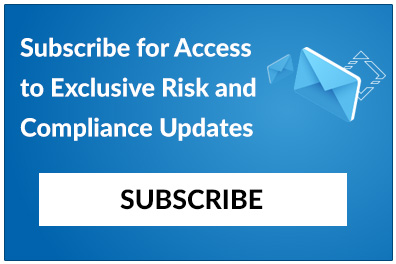Home/ Blog / Integrated Risk Management for Financial Organizations
Financial institutions, including banks, will find that risks are often interconnected. The possible risks can range from operational risks to cybersecurity threats, both of which may happen simultaneously.
An integrated approach to risk is one of the wisest moves that financial service providers can make when it comes to staying ahead of regulatory change. To develop an integrated risk management (IRM) framework, the organization needs to consolidate the following risk procedures across all departments:
- Identification
- Assessment
- Management
- Monitoring
It is necessary to realize that risk management is an interdependent process and cannot be done efficiently when there are operational silos (where different business units are concerned). Adopting an all-encompassing approach to risk will help pivot your organization’s risk management strategy from reactive to proactive.

Establishing an IRM Framework
The first steps to integrating your risk management framework are to define some basic standards for managing all risk categories. These standards will provide clarity on risk ownership, escalation procedures and reporting to relevant stakeholders.
A few of the aspects your organization should consider when building an IRM framework include:
Risk identification and classification
To be defined across different departments or business units within the organization.
Risk appetite frameworks
Outlining the types and levels of acceptable risk, as defined by the organization.
Risk ownership and accountability
Ensuring that business leaders work in coordination with compliance professionals.
Risk monitoring and reporting systems
Apart from internal use, this also aids in presenting an audit trail to regulators.
When you have the right tools at your disposal, these pillars of integration become much easier to implement across your organization. See our blog about why your organization needs Predict360 in its GRC technology stack.
Further Benefits of an Integrated System
A study conducted by Deloitte found that implementing a structured risk management framework resulted in a 35% reduction in operational losses. Similarly, integrating the risk management process afforded organizations an ROI of 349% over three years, according to a Forrester Consulting Total Economic Impact study.
These are just some of the additional benefits of implementing an IRM system that go beyond just simplifying the process. A few of the other benefits to integrating risk management within your organization may include:
- Minimizing compliance costs
- Automated workflow processes
- Optimization of resources
- Quicker decision-making
Integrated Risk Management
Find the answers to some of the most common questions and concerns about IRM frameworks in our FAQ section below:
How does integrated risk management improve regulatory compliance?
By consolidating risk identification, assessment, and monitoring across all business lines, financial organizations can more easily demonstrate to regulators that they understand their complete risk profile and have the correct controls in place.
What KPIs should financial organizations track to measure integrated risk management effectiveness?
We suggest incorporating the following KPIs into your goals and reporting:
- The frequency and severity of risk incidents over time
- Control test pass rates across the organization
- Regulatory findings and violations (the number and severity)
- Correlations between IRM and improved financial outcomes
- Time savings and cost reductions
- Quality and timeliness of risk reporting to senior management and the board
- Effectiveness of risk escalation procedures
What are the main challenges in implementing integrated risk management?
One of the biggest challenges when it comes to implementing anything new within an organization is resistance to change. You may encounter departmental interests and siloed risk processes that seem too established to alter.
Resource constraints can also present challenges. Building integrated frameworks requires dedicated personnel, technology investments, and ongoing training to work as it should.
How can compliance professionals lead integrated risk management implementation?
These are some of the best ways to go about easing into the implementation of IRM throughout your organization:
- Educate stakeholders that integration will reduce their compliance risk and make the organization more resilient.
- Present statistics and case studies that demonstrate compliance benefits and financial returns.
- Advocate for ERM platforms that consolidate data and automate workflows.
- Work with your organization’s board, senior management, and business leaders to establish a unified GRC structure.
For any other questions related to the practical implementation of regulatory compliance tools, consider getting in touch with our team.
Move beyond departmental silos toward organization-wide integration. Compliance experts that work together with other business units to create a risk management framework can better navigate the complex regulatory environment. This not only makes the organization perform better but also improves productivity while protecting stakeholder interests.
Request a Demo
Complete the form below and our business team will be in touch to schedule a product demo.
By clicking ‘SUBMIT’ you agree to our Privacy Policy.


